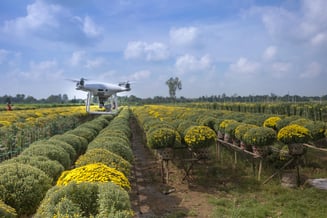In IT the concept of an “asset” has long been tied to the physical. Then the term evolved to include non-physical assets such as cloud resources and licence keys. But at Starhive, we know IT teams need to manage more than just these assets. Everything from privacy rules to people and access rights. These intangible pieces of data have lifecycles, responsible owners, and other elements in common with traditional assets. So why don't we consider them as assets or as "things" worth tracking too?
This blog explores the evolution of the term 'IT assets'. How it’s changed, what it means today, and why we believe it’s time for a new, broader approach to asset management to ensure IT teams have all the information they need to be successful.
Traditional IT assets: hardware, software and cloud resources
Historically, the definition of IT assets was straightforward. They were the physical objects that enabled an organisation’s IT infrastructure: computers, hard drives, switches, and the like. These items often lived in the office or a data centre and were managed manually, tagged with asset IDs, and carefully logged in an asset management system (or in worst case, a spreadsheet) to keep track of where they were, who owned them, and what they cost.
And keeping track of your physical hardware (over a certain value at least) is still critical. But these days not every asset is physical. These days the shift to cloud has impacted IT asset management. IT teams now oversee not just physical infrastructure but also a wide range of virtual resources from cloud-hosted databases to software licences and entire SaaS ecosystems. But they also manage far more than that.
The modern IT landscape
IT departments are also responsible for data privacy, regulatory compliance, user access, software provisioning and much more. And these tasks have become more and more entwined with traditional assets. It’s clear that the "things" IT cares for are no longer just physical or virtual assets; they are increasingly intangible and complex.
This shift means that what qualifies as an “asset” must evolve. A configuration stored in the cloud, a dataset held in a specific region, or even a particular compliance regulation—all have value to the business and require tracking. At Starhive, we believe they are assets, just like a physical server or a cloud resource might be.
Starhive’s perspective: almost anything and everything can be an asset
We believe the term “IT asset” should not be limited to the traditional understanding of IT assets. Instead, an asset should be defined as anything meaningful to an organisation, physical or immaterial, tangible or abstract.
Under this definition, a laptop can be an asset in the exact same way a user, regulation, or risk rating can be an asset. It is some "object" the business needs to know information about (such as core attributes, lifecycle, change history) to improve process efficiency or reduce costs.
As every business is unique, what makes sense for one to track may not make sense for another.
Why this matters
The challenge many businesses face today is fragmentation. Under this broader definition of assets, many assets are no longer just relevant to a single team. Key information is stored across dozens of systems: an IT asset management system, some purpose-built for finance, others for procurement or operations. For example, a compliance regulation can be of interest to both IT and the legal team. This makes it nearly impossible to get a holistic view of what your organisation values or depends on.
And that’s a serious risk. Without proper tracking, traditional and new assets alike can become invisible. Data becomes siloed, dependencies go unmanaged, discrepancies get introduced, and decisions are made on incomplete or outdated information.
A modern asset management approach solves this. By recognising everything of importance as an asset and connecting it through a unified platform like Starhive, organisations gain full visibility. They understand not only what they have, but how it all fits together. What’s critical, what’s changing, and what depends on what.
What isn’t an asset?
Under this definition, it’s easy to think that we’re advocating for all data to be treated as assets but that’s not quite the case. For example, at Starhive we would not consider things like tasks, issues, or projects as assets. These entities tend to have some performative element to them. Someone (or something) needs to perform a particular task.
We also believe that what is an asset to one business will not be an asset to another. It’s all about what value the object brings to the business.
Assets beyond IT
This mindset of anything can be an asset applies universally across departments.
-
HR teams manage assets like access cards, job roles, career paths, and people-related data.
-
Legal teams consider contract templates, compliance processes, and negotiation frameworks as critical assets.
-
Facilities teams track traditional physical assets, as well as vendors and contracts.
Under this broader definition, assets aren’t just tools: they are the foundational elements that support everyday operations. They’re dynamic, interconnected, and often specific to the context of the team using them.
Summary: a new definition of IT assets
The definition of an IT asset has already shifted due to the move to the cloud. We think it needs to shift further. At Starhive, we believe that anything of value or importance to your organisation that needs to be managed by the IT team is an IT asset.
That includes the traditional hardware and software, but also the more abstract, contextual, or immaterial elements that make your department (and business) run. Starhive is built for this broader, contextual understanding. We support custom data models that reflect your organisation’s unique structure. You can define, track, and connect any kind of asset in one unified system. It’s built for how businesses operate today, not twenty years ago.
This broader view isn’t just more accurate—it’s essential. In an age where complexity is growing and digital transformation is constant, organisations need IT asset management systems that can keep up.
So next time you ask, “What’s an asset?”—maybe the better question is, “What isn’t?”
Want to explore your assets? Why not chat with us about them?

.png)



